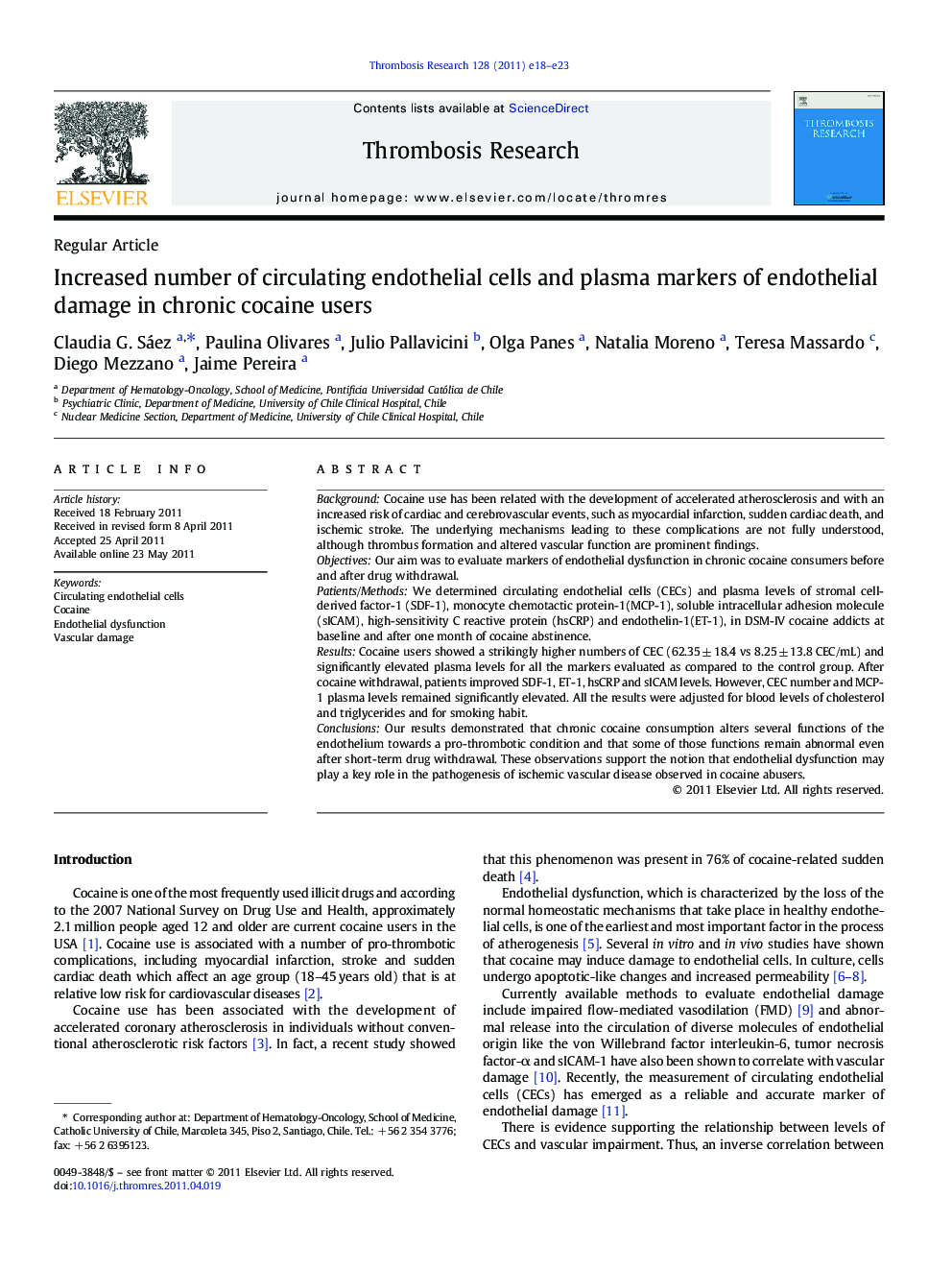| کد مقاله | کد نشریه | سال انتشار | مقاله انگلیسی | نسخه تمام متن |
|---|---|---|---|---|
| 6002795 | 1182980 | 2011 | 6 صفحه PDF | دانلود رایگان |

BackgroundCocaine use has been related with the development of accelerated atherosclerosis and with an increased risk of cardiac and cerebrovascular events, such as myocardial infarction, sudden cardiac death, and ischemic stroke. The underlying mechanisms leading to these complications are not fully understood, although thrombus formation and altered vascular function are prominent findings.ObjectivesOur aim was to evaluate markers of endothelial dysfunction in chronic cocaine consumers before and after drug withdrawal.Patients/MethodsWe determined circulating endothelial cells (CECs) and plasma levels of stromal cell-derived factor-1 (SDF-1), monocyte chemotactic protein-1(MCP-1), soluble intracellular adhesion molecule (sICAM), high-sensitivity C reactive protein (hsCRP) and endothelin-1(ET-1), in DSM-IV cocaine addicts at baseline and after one month of cocaine abstinence.ResultsCocaine users showed a strikingly higher numbers of CEC (62.35 ± 18.4 vs 8.25 ± 13.8 CEC/mL) and significantly elevated plasma levels for all the markers evaluated as compared to the control group. After cocaine withdrawal, patients improved SDF-1, ET-1, hsCRP and sICAM levels. However, CEC number and MCP-1 plasma levels remained significantly elevated. All the results were adjusted for blood levels of cholesterol and triglycerides and for smoking habit.ConclusionsOur results demonstrated that chronic cocaine consumption alters several functions of the endothelium towards a pro-thrombotic condition and that some of those functions remain abnormal even after short-term drug withdrawal. These observations support the notion that endothelial dysfunction may play a key role in the pathogenesis of ischemic vascular disease observed in cocaine abusers.
Journal: Thrombosis Research - Volume 128, Issue 4, October 2011, Pages e18-e23